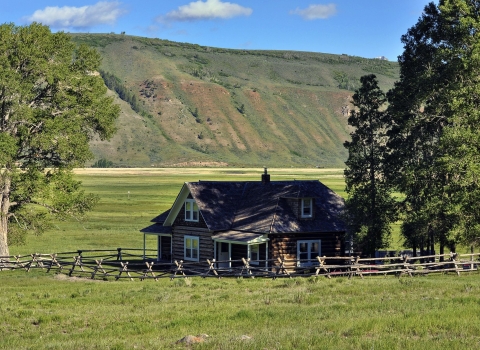Today, the U.S. Fish and Wildlife Service is proposing to both revise the existing Biological Integrity, Diversity, and Environmental Health (BIDEH) policy and implement a new rule that will guide management of national wildlife refuges. The proposals will help provide a consistent, transparent, and science-based approach for evaluating both existing and new management practices at national wildlife refuges, in support of the mission of the National Wildlife Refuge System. These proposals will support conservation throughout the Refuge System and equip wildlife refuge managers with a framework to better tackle the dual threats of climate change climate change
Climate change includes both global warming driven by human-induced emissions of greenhouse gases and the resulting large-scale shifts in weather patterns. Though there have been previous periods of climatic change, since the mid-20th century humans have had an unprecedented impact on Earth's climate system and caused change on a global scale.
Learn more about climate change and biodiversity loss.
“These important updates will provide a consistent, transparent approach and help strengthen the Service’s ability to achieve the Refuge System mission to conserve, manage and restore fish, wildlife and plant resources on national wildlife refuges across the United States,” said Service Director Martha Williams. “This will ensure that our national wildlife refuges are a thriving and sustained network of healthy lands and waters that include imperiled species and diverse wildlife populations, all for the benefit of present and future generations.”
These proposals support the conservation of the broad array of fish, wildlife, plants and habitats on refuges by providing refuge managers with a framework by which to evaluate and implement management actions to protect vulnerable species, restore and connect habitats, promote natural processes, sustain vital ecological functions, incorporate Indigenous Knowledge, and increase resilience to climate change. The proposals also provide a decision framework for other management practices such as native predator control, invasive species invasive species
An invasive species is any plant or animal that has spread or been introduced into a new area where they are, or could, cause harm to the environment, economy, or human, animal, or plant health. Their unwelcome presence can destroy ecosystems and cost millions of dollars.
Learn more about invasive species management, pesticide use, mosquito control and other practices. While the proposals direct a default position regarding the use of each practice, they also provide refuge managers with the flexibility to implement these practices as necessary to meet statutory requirements and the mission of their refuges.
The authority for the proposed revised policy and new rule is derived from the National Wildlife Refuge System Improvement Act of 1997, which requires the Secretary of the Interior, acting through the Service, to ensure that the biological integrity, diversity and environmental health of the Refuge System are maintained.
The proposed rule will publish in the Federal Register on February 2, 2024, opening a 30-day comment period until March 4, 2024. The notice will be available at http://www.regulations.gov, Docket Number: FWS-HQ-NWRS-2022-0106 and will include complete details on the proposals on the national wildlife refuges and how to submit your comments.
The Refuge System is an unparalleled network of 570 national wildlife refuges and 38 wetland management districts. There is a national wildlife refuge national wildlife refuge
A national wildlife refuge is typically a contiguous area of land and water managed by the U.S. Fish and Wildlife Service for the conservation and, where appropriate, restoration of fish, wildlife and plant resources and their habitats for the benefit of present and future generations of Americans.
Learn more about national wildlife refuge within an hour’s drive of most major metropolitan areas. More than 67 million Americans visit refuges every year. National wildlife refuges provide vital habitat for thousands of species and access to world-class recreation, from fishing, hunting and boating to nature watching, photography and environmental education.
The U.S. Fish and Wildlife Service works with others to conserve, protect and enhance fish, wildlife, plants and their habitats for the continuing benefit of the American people. For more information, visitwww.fws.gov, or connect with us through any of these social media channels: Facebook, Instagram, X(formerly known as Twitter), LinkedIn, YouTube and Flickr.
-FWS-


